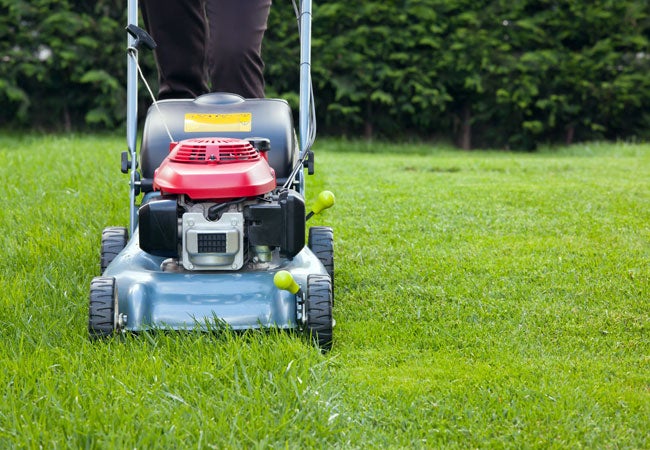A lawn, however small, is an important part of any garden. It is an ideal place to relax, rest and play, but it also provides a wonderful backdrop for ornamental plants. However, in order for it to serve its purpose, it must be well cared for, as a neglected lawn will certainly not be an ornament to any garden.
What conditions does a lawn like?
Lawns perform different functions in the garden, so they cannot be the same. A different lawn will be suitable for lovers of ball games (sports lawns), another will work well as a place for afternoon relaxation (all-purpose or recreational lawns), and another will provide a beautiful setting for manicured flowerbeds (lawn grass). There are also lawns for special tasks, which will cope with dry areas (grass mix for dry areas) or thorns (grass mix for shade). So for a lawn to meet our expectations, it should be adapted to the conditions and use.
Location
For most lawns, the best place is a sunny position, but if you have a problem with drying soil, it is better to establish a lawn in an openwork semi-shade or choose grass for dry areas. Moisture in the soil will also last longer in a shady place, but such conditions grasses do not like, except for a few species and varieties that are included in grass mixtures for shady positions.
Soil
Lawns perform different functions in the garden, so they cannot be the same. A different lawn will be suitable for lovers of ball games (sports lawns), another will work well as a place for afternoon relaxation (all-purpose or recreational lawns), and another will provide a beautiful setting for manicured flowerbeds (lawn grass). There are also lawns for special tasks, which will cope with dry areas (grass mix for dry areas) or thorns (grass mix for shade). In some cases, the lawn is the entrance to the garage and is often subject to various tests. Sometimes a car will pass through, and sometimes a bicycle, various boats or storage kayaks will move across the grass. So for a lawn to meet our expectations, it should be adapted to the conditions and use.
How to take care of the lawn?

Beautiful green turf is an excellent decoration of the garden, but he mistakenly claims that the lawn is maintenance-free, because if it is to look really impressive, its maintenance requires a lot of work. Among the range of lawn care expected by the lawn are mowing (even once a week), watering (once a week during the growing season, and even every day during hot weather), weeding (by hand and using herbicides to destroy dicotyledonous weeds) and fertilizing, as well as spring scarification (cutting the turf with special rakes or scarifiers to a depth of about 5-12 mm., in order to get rid of the felt deposited in the grass and stimulate the grass to shrub better) and aeration (deep pricking of the lawn with spiked shoes or aerators min. to aerate the soil) and sandblasting (filling the holes created after aeration with sand, which loosens and aerates the soil and improves its water management). After winter, it may also be necessary to replenish the turf with new grass and remove the effects of snow mold that formed over the winter.
Recommended reading – Best Potato Grow Bags.
Planting
Lawns can be established by seeding or from a roll. The first solution is cheaper but very labor-intensive, and you have to wait at least a few weeks for the results, while the second way is expensive, but allows you to enjoy a great lawn almost overnight.
Fertilization

The lawn is usually fertilized 3 times a season: in early spring, right after the first mowing (III/IV), in late spring (V/VI), and in summer (by k. VII at the latest). At this time, multi-nutrient lawn fertilizers are used, rich in nitrogen support the development of green parts. Instead of them, you can apply a long-acting fertilizer once, which lasts up to 3 months or look for organic lawn fertilizers, which will be more beneficial to the environment.
At the end of the season (k. VIII-IX), it is also worth using autumn fertilizers that contain little or no nitrogen but are rich in other elements that strengthen the grass and help it survive the winter.
Trimming

The lawn requires frequent and systematic mowing, during which the grass is cut by about 1/3 of its height (the lawn should be mowed even weekly, as the grass grows quickly and its optimal height is about 4-5 cm). The procedure should be carried out with a mower with efficient and well-sharpened blades because blunted and chipped blades, instead of cutting the grass, tug and fray the blades, which not only look unsightly after the procedure but are also more vulnerable to the penetration of pathogens.
Protection from diseases and pests
Turf-forming grasses are plants susceptible to attacks by diseases (e.g. rust, snow mold, a yellow spot of grasses, powdery mildew) and pests (min. sprouts, swellings, turmeric). Preventing them is difficult, but prevention can help to a certain extent (regular mowing, removing the felt in the grass, avoiding over-fertilization, avoiding trampling a lawn covered with snow). However, if this is not enough, you will need to reach for one of the currently recommended pesticides, starting with organic preparations (such as Polyversum WP).
